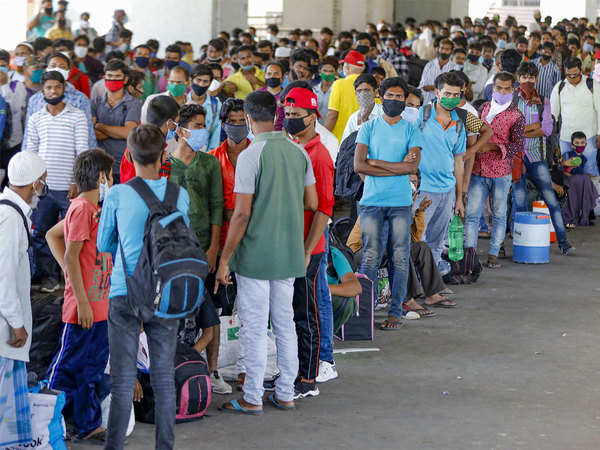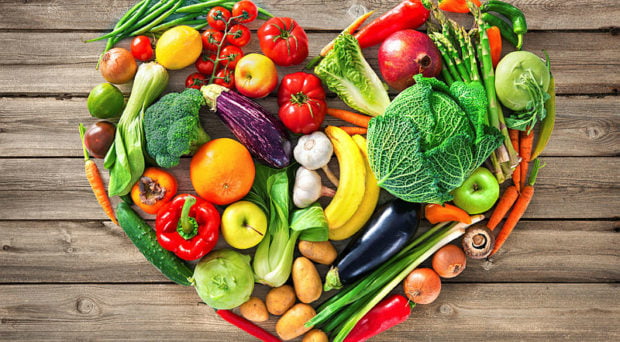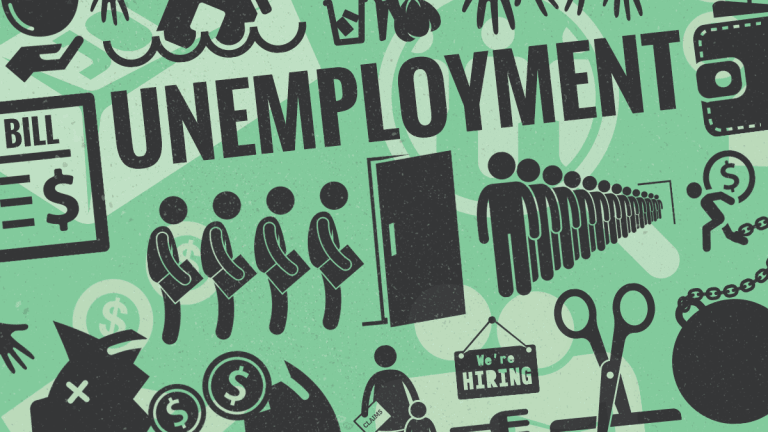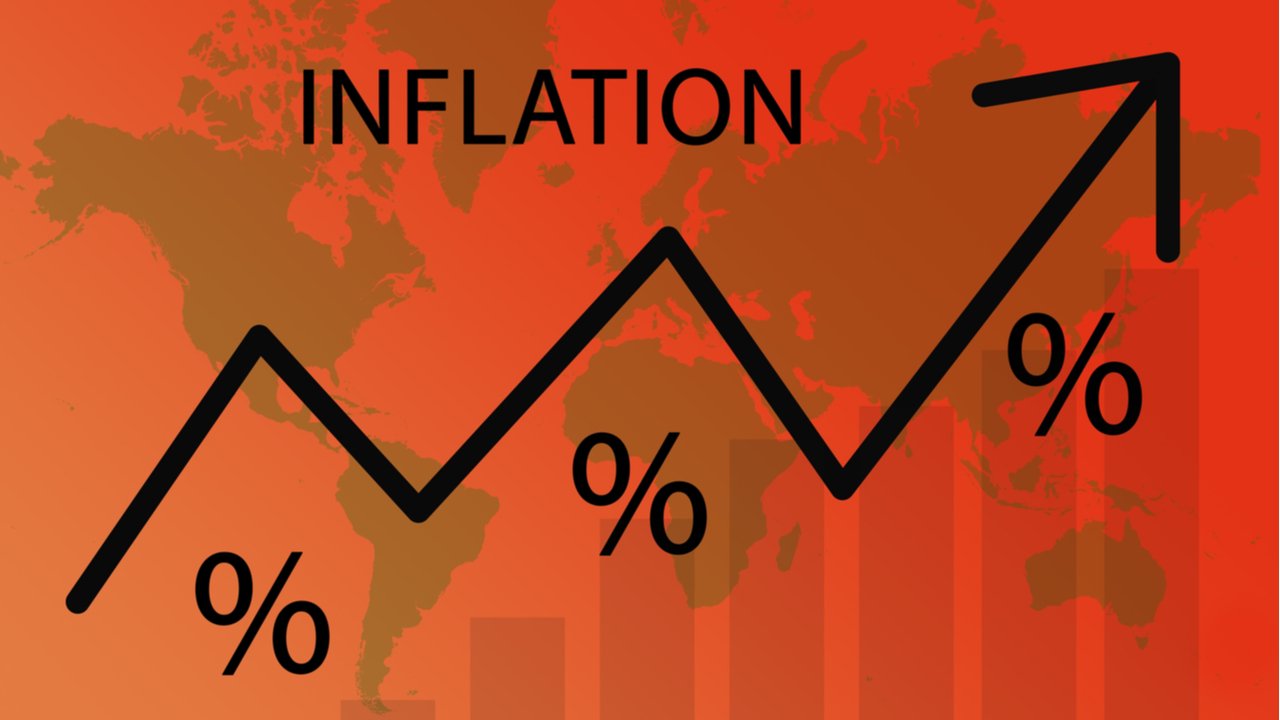Unemployment, inflation on the rise: Indian economy to brace itself for coming days

Unemployment, inflation on the rise: Indian economy to brace itself for coming days
In January, India’s retail inflation reached 6%, the highest level since July 2021. Inflation has risen for the fourth time in a row.
Inflation has also surpassed the Reserve Bank of India’s upper tolerance limit for the medium-term inflation objective of 4% within a +/- 2% band.

INDIANS PAYING 198% MORE MONTH-ON-MONTH FOR FOOD & BEVERAGES
Food and beverage prices have risen, resulting in severe inflation. According to data analysis, food and beverages contributed 43 per cent to inflation year over year and 198 per cent month over month.
Food inflation has risen to a 14-month high of 5.43 per cent, posing a severe threat to the average person.
Food inflation passes the buck to the ‘aam admi,’ who must sell more to make ends meet.
“Rise in Brent crude prices prompted by geopolitical concerns and the falling rupee are fuelling inflation,” Rupa Rege Nitsure, group chief economist at L&T Financial Holdings, explained how other factors impact inflation.
RBI, on the other hand, predicted that India’s average inflation would ease to 4.5% in 2022-23, down from 5.3 per cent last week.
Governor of the Reserve Bank of India, Shaktikanta Das, stated, “There’s no reason to be concerned about inflation. The inflation rate is predicted to be approximately 6%. That should not come as a surprise or cause anxiety because we have taken that into account.”

FOOD: THE DRIVING FORCE BEHIND RISING INFLATION
Food inflation has surged to 5.4 per cent month over month, up from 4 per cent the prior month.
According to data analysis, inflation in eggs was 4.15 per cent in February, compared to 2.23 per cent in January. In February, inflation in oils and fats was 16.44 per cent, down from 18.70 per cent in January.
On the other hand, food inflation is expected to fall in the coming months, according to economists.
According to Kapil Gupta, an economist at Edelweiss Securities, “Across all food commodities, the fundamental trend is downward. Cereals and milk inflation is around 4%, whereas vegetable inflation is around 5%. Food inflation is expected to lessen in the future.”
“We’ve seen how inflation for pulses, eggs, meat, and fish, which was in double digits for much of 2021, has dropped to 3% and 5%, respectively. As a result, I anticipate that food inflation will decline shortly, “Kapil Gupta added.

FOOTWEAR AND EXPENSIVE CLOTHING
Footwear, apparel, and personal care products are among the areas that have seen price increases.
Inflation in these areas increased month over month. Based on increasing cotton costs, clothing and footwear inflation have reached a 197-month high of 8.84 per cent.
Automobiles and fast-moving consumer goods (FMCG) industries are seeing higher input costs, fueling inflation. Items are becoming more expensive due to rising input costs as corporations pass the cost increase on to the customer.
In January, household goods and services inflation reached 7.1 per cent, the highest level in 94 months.

THE GOVERNMENT IS PAYING ATTENTION TO OIL PRICES.
In the Rajya Sabha, Union Petroleum Minister Hardeep Singh Puri stated that the government would take all necessary steps in the coming months to guarantee that customers are relieved of high fuel costs caused by the Russian-Ukraine conflict.
“The government will also continue to reduce cooking gas costs to cushion people from excessive prices,” Hardeep Puri added.
Hardeep Puri also mentioned how oil firms keep prices under control.“When it comes to fuel prices, the oil marketing firms have the final say.” “When they can no longer stomach it,” he continued, “they will go with a fuel hike.”
Brent crude oil prices, which reached a 14-year high of $139 per barrel on March 7 after touching $100 per barrel on February 28, are suddenly falling, providing relief to Indian oil corporations that have been instructed to keep gasoline prices under control November last year.
Excise duty on fuel was decreased by Rs 5 per litre and on diesel by Rs 10 on November 4, 2021, to bring assistance to consumers suffering from record-high prices.
For citizens, it’s a double whammy: on the one hand, inflation is rising, while on the other hand, unemployment is also increasing.
Data issued by the National Statistical Office reveals how women’s employment has decreased concerning news on the employment front.

DROP-IN WOMEN, YOUNG WORKFORCE
According to data analysis, women’s labour force participation rate declined to 20.1 per cent from 21.2% in the last quarter from April to June 2021.
Women’s employment has decreased not just on a quarter-by-quarter basis but also on a year-by-year basis. In the April-June quarter of 2021, the overall labour force participation rate fell to 46.8%, down from 47.5% in the January-March quarter.
Unemployment has increased across the board, not only among women. In the April-June quarter of 2021, the unemployment rate among the young (aged 15 and above) in metropolitan areas surged to 12.6 per cent, up from 9.3 per cent in the January-March period.
The disastrous second wave of the Covid-19 is blamed for the rise in youth unemployment.

COVID GAVE RISE TO SELF EMPLOYED
According to government data, the percentage of self-employed people (aged 15 and older) increased to 40.7% in the April-June quarter, up from 39.3 per cent the previous quarter.
This increase is linked to the pandemic-induced lockdown, which resulted in enormous job losses across India’s industries.
In the three months leading up to June 2021, the percentage of employed people in the population declined to 40.9 per cent, down from 43.1 per cent the previous quarter.

India’s job crisis leading to a ‘nowhere generation’
According to this week’s budget pronouncements, India wants to create six million jobs over the next five years. It won’t be easy: the country’s jobless rate has recently surpassed other emerging nations.
A group of students at a college in Meerut, UP, jokingly dubbed themselves the “nowhere generation” in the mid-2000s.
This group, worn down by years of futile attempts to obtain government jobs, claimed to be trapped between their rural homes and their dreams of metropolitan mobility.
“Berozgaari” (unemployment) seems to have abandoned them, leaving them stranded in the modern world.
“Well, our lives have just become about passing the time,” they’d reply. As India’s job issue has become increasingly apparent in recent weeks, media and popular focus have shifted to the phenomenon of “unemployed young” in India.
Hundreds of millions of unemployed young people, many of whom are well educated, cast doubt on India’s development and optimistic expectations that Asia will reap the benefits of a “demographic dividend.”
The unemployment crisis, which was visible in the mid-2000s, has worsened significantly since then.
As public worry about unemployment grows, the media attention naturally shifts between raucous rallies and politicians’ stump speeches.
But, if we shift our focus and set aside prejudices about unemployed youth as a threat to society, we might wonder: What do young people in India do daily? What do they do with their free time? How do they interact with the people in their communities? What impact are they having on India?
Many researches have been conducting a study on the experiences and behaviours of unemployed young adults aged 18 to 35 in Uttar Pradesh and Uttarakhand for the past 25 years. This research involves living and working with unemployed young people in Uttar Pradesh’s Meerut area and Uttarakhand’s Chamoli district for several years.
The magnitude of social distress is staggering. Young individuals who are unemployed face a slew of setbacks. They lack money, cannot meet familial expectations, typically lack respect, and have difficulty managing their marriages. Their absence of permanent work often harms men’s status as breadwinners. Furthermore, they frequently feel resentful of their time on education and job hunts.
Work and citizenship are intertwined. Many young people dreamed of serving their country in their teens and early twenties by earning employment in government service, which has become incredibly difficult to come by.
It’s no surprise that many unemployed young people, particularly guys, have become cynical and distant, referring to themselves as “doing nothing” or “passing the time.” It appears that the generation of nowhere is everywhere.
However, self-stereotypes of the unemployed and underemployed “doing nothing” – or being “nowhere” – should be questioned.
Daily, young people are frequently involved in various sorts of entrepreneurship. They find a “fallback” job that isn’t necessarily of high quality or that utilises all of their skills but is sufficient to give them hope that better opportunities will arise.
The level of community work conducted by young people who are unemployed or underemployed is also noteworthy. This segment of society has been India’s civil society’s backbone.
At the most basic level, these young people frequently serve as social change interpreters, volunteers, and aid to others in their villages or town neighbourhoods. They assist people in obtaining government services. For example, they spread new ideas on technology, microcredit, religious practice, environmental protection, and development.
These young people protest occasionally, but most of the time, their mobilisation is focused on services and infrastructure rather than politics. They desire a better math teacher or a school extension.
Many unemployed young people have informed us that even if they cannot help themselves, they may be able to assist future generations.
Teenagers and pre-teens are coping with unfamiliar educational and employment options, which their parents find difficult to comprehend. The generation in the middle, comprised of unemployed or underemployed 18-35-year-olds who have recently struggled to find work, has emerged as the central transitional generation.
This is not a romanticised depiction of young people or unemployment. It is, however, to recognise a source of energy in the Indian population: unemployed young people in their late teens, twenties, and early thirties who reside in ordinary places around the country. They will determine India’s and the world’s future paths.
It is also to ask questions of policymakers.
What can external organisations do to help this group of young people? Perhaps the Mahatma Gandhi National Rural Employment Guarantee Scheme in India could be broadened to include formal chances for young people to engage in the type of community work they are leading. Perhaps attempts could be made to identify ways to provide skills accreditation to active jobless, or underemployed young people.
One thing is sure: Youth is desperately eager for such opportunities.

India’s job issue is even worse than it appears.
In most nations, unemployment will increase in 2020. However, India’s performance outperformed most emerging countries, including Bangladesh (5.3%), Mexico (4.7%), and Vietnam (2.3%), according to Prof Basu.
Even salaried jobs have fallen, according to the CMIE. Part of this may be attributed to businesses decreasing their workforce and cutting costs as a result of the pandemic.
According to research conducted by Azim Premji University, young workers aged 15 to 23 were severely harmed by the 2020 shutdown.
“There was a churn. Nearly half of those who had salaried jobs prior to the lockdown was unable to keep them, according to our findings. “According to university economist Amit Basole.
According to economists, the epidemic is only partially to blame for the job losses. “What happened in India underlines that policy is formed with little regard for the well-being of people and small enterprises,” Prof Basu added.
These sad headline stats don’t tell the whole storey when it comes to India’s persistent unemployment.
The number of people looking for work has declined among the working-age population. The percentage of women in the workforce aged 15 and up is one of the lowest in the world.
Young people are suffering the burden of massive employment losses. Despite the fact that the informal economy employs 90% of the workforce and generates half of the country’s GDP, in India, unemployment primarily refers to educated young people seeking jobs in the formal business.
“Unemployment is a privilege reserved for the educated and well-off. The poor, the unskilled, and the semi-skilled are excluded, “A labour economist, Radhicka Kapoor, agreed.
The better educated a person is, the less likely they are to be jobless and unwilling to engage in low-wage informal jobs. Poor individuals, on the other hand, who lack access to education, are compelled to take any job that comes along.
As a result, unemployment estimates don’t reveal much about the economy’s overall labour supply.
Three-quarters of India’s workforce is self-employed, uninsured, and unable to access social security benefits.
Only about 2% of the workforce has stable formal jobs that include social security benefits such as a retirement savings plan, health care, maternity benefits, and written contracts lasting more than three years. Only 9% have a formal job with access to at least one form of social security.
“Most India’s labour is fragile and lives in a risky situation,” stated Dr Kapoor. The pay is meagre. According to surveys, 45 per cent of salaried employees make less than 9,750 rupees per month, which is less than the proposed minimum pay of 375 rupees per day, eventually dropping.
The country’s leapfrogging from a predominantly farm economy to a growing services economy – no other country of India’s size has seen growth headed by services rather than industry – is one reason for the country’s chronic unemployment despite solid growth. High-end services like software and finance, staffed by highly skilled individuals, have fueled India’s development. Few manufacturing or factory jobs have accommodated a large number of unskilled or low-skilled people.
Prof. Basu feels that India’s joblessness is alarming because the country’s bottom sector is faring worse than in most other countries, even as the country’s growth resumes. He believes that the government should keep inflation under control, create jobs, and help workers. Furthermore, a “politics of divisiveness and hostility” is “eroding trust, which is one of the crucial underlying drivers of economic success” under Mr Modi’s rule.
Mr Modi, who promised a wave of new jobs when he took power in 2014, is granting financial incentives to crucial industries and starting an ambitious “Make in India” campaign to promote domestic manufacturing. Nothing has yet resulted in manufacturing – and job – boom due to limited demand.
Many people, including Dr. Basole, believe that India clearly needs cash transfers or an employment guarantee scheme for the poorest 20% of urban households in order for them to spend and repay debt in the short term. Long-term, the challenge is ensuring that all workers are paid a basic minimum wage and have access to social security.
“We won’t be able to have any substantial job reforms till then,” Dr Kapoor remarked.

Inflation biggest concern of 2022-23: India Inc
India Inc executives from various consumer product categories, including everyday home items, clothes and lifestyle products, and electronics, have identified inflation as the most pressing problem for the 2018 fiscal year, even more, important than boosting demand.
According to executives, companies have prioritised raising prices, lowering grammage and packaging layers, switching to lower-cost raw materials, and boosting supply chain efficiency to deal with increased expenses.
In post-earnings management comments on Tuesday, Procter & Gamble said, “As the sector faces commodity inflation, we have doubled down on enhancing productivity and supply chain efficiency.”
While the budget announcement of enhanced minimum support price (MSP) allocation to farmers is intended to improve rural demand, some industry executives believe it will create inflationary pressure because it will increase the cost of procuring farm products.
“Putting money in the hands of rural customers through increased MSP allocation will influence inflation because it will eventually raise the cost of agri-products,” said Mayank Shah, senior category head of Parle Products, a large biscuits manufacturer.
Sugar, flour, milk, freight, laminate, and corrugated boxes have all increased by around 25% in the last three quarters due to Covid-related worldwide supply chain delays and shortages.
Dabur cited “exceptional inflationary pressure” in its quarterly announcement, despite reporting marginal net profit growth of 2% for the three months ending December.
“With historic inflation of 13% and low consumer attitudes, the overall operational environment remained challenging during the quarter,” Dabur CEO Mohit Malhotra said.
According to him, the corporation is reducing the impact of inflation through carefully calibrated pricing rises and cost-cutting efforts.
Price increases, however, may have an impact on demand, particularly at lower price points in non-essential categories, according to CEOs.
As a result of the price hikes, apparel and footwear manufacturers are now attempting to mitigate inflation by modifying designs and employing alternative materials.
“Raw material cost rises have never been seen before, and uncertainty over imports from China has exacerbated the problem,” said Harkirat Singh, general director of Aero Club, which manufactures Woodland garments and footwear.
According to Singh, the company is taking interim solutions such as creating less priced canvas shoes and employing other materials for leather while maintaining the same quality.
“Cotton costs, which have more than doubled, are showing no signs of dropping,” Sanjay Vakharia, chief executive of designer denim maker Spykar Lifestyles, said. “Logistics are expensive, and Covid-19 has damaged the supply chain.”
He stated that the corporation is attempting to keep customer prices from rising too much. “Our pricing will increase by around 10% during the summer and spring seasons,” Vakharia stated.
According to executives, some manufacturers may reduce quality, design, and aesthetics at the lower end of the market since they cannot pass on the cost increases to end customers.
According to the Clothes Manufacturers’ Association of India (CMAI), due to increasing prices, advance booking for spring and summer clothing is down by 25-30% compared to summer 2021.
“Inflation and lowered mood due to the third wave of Covid have reduced demand for summer clothes,” said Rahul Mehta, chief mentor at CMAI. “Overall production expenses, including cotton, transportation, and packaging material, have risen by 30 per cent to 35% in the last six months. “The price of finished goods has increased by 15% to 25%,” he explained.
According to a Goldman Sachs prediction, oil prices could reach $100 per barrel this year and continue to grow through 2023.




